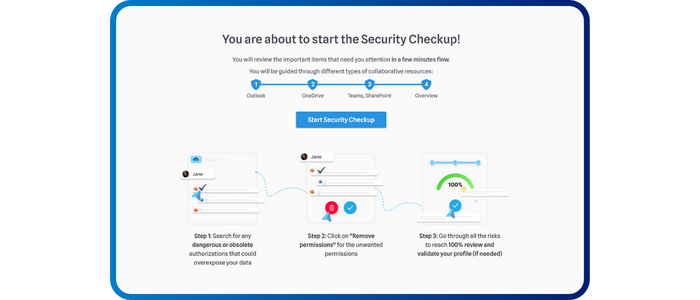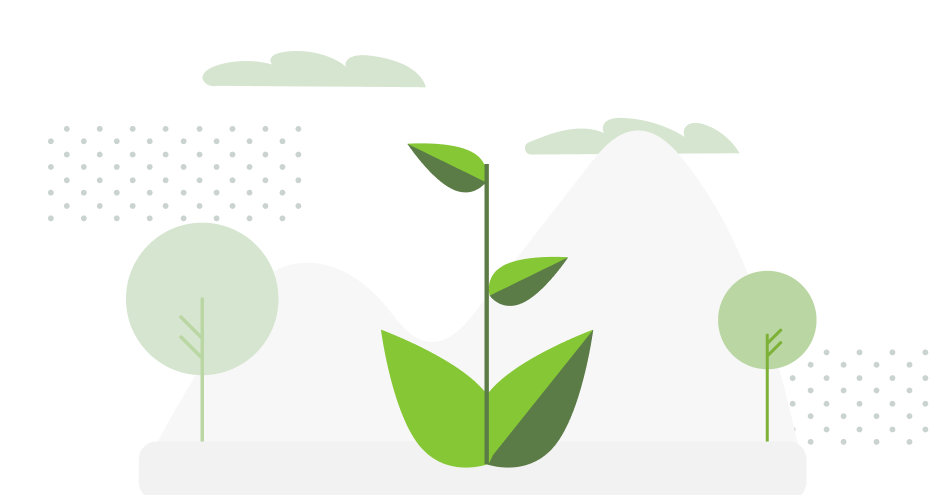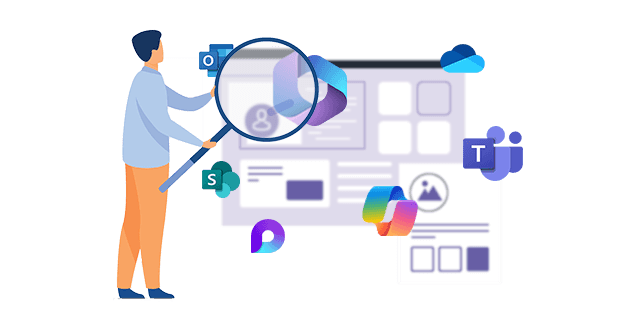
Security CheckUp: Simplifying risk review in M365
Lire l'article[NEW] MYDATAMANAGEMENT TO CLEAN UP YOUR OBSOLETE, UNUSED AND VOLUMINOUS DATA
Solutions
Effective response to six major challenges in data security
#1 user-interacting platform for detection
Discover the platform
Best practices to improve Microsoft Teams security
Download the infographicOur resources
Check out our useful resources for improving data protection
Microsoft 365
13 November 2024

Welcome to our responsible digital glossary, an essential resource for understanding key concepts and practices related to digital sobriety. Digital technology, found throughout society, has a significant impact on the environment. This glossary will provide you with clear and concise definitions for responsible and sustainable use of digital technology.
Cold archiving means the storage of rarely accessed data on low-energy, high-performance media, which helps to reduce the carbon footprint.
ROT encompasses three types of data: Redundant, Obsolete, and Trivial. It refers to information that is no longer useful or relevant, often cluttering storage systems and making data management more challenging.
The data life cycle covers all of the stages through which data passes: from creation to destruction, collection to storage, usage to archiving.
Digital cleaning involves sorting and eliminating unnecessary or obsolete files, applications and emails. This process frees up storage space, improves device performance, and simplifies data management.
Digital environmental footprint measures the ecological impact of information technologies, including energy consumption, CO2 emissions, and the production of electronic waste.
Digital governance: Digital governance involves establishing policies, procedures and controls to ensure responsible, secure and sustainable use of information technology within an organisation.
Data obsolescence occurs when information becomes outdated or useless, requiring it to be deleted or archived to optimise storage and systems efficiency.
The series of operations performed on data to transform, analyze, and organize it into a useful format for further use. This process typically involves collecting raw data, filtering, sorting, analyzing, processing, storing, and presenting it.
Digital sobriety means the moderate and thoughtful use of digital tools, aimed at reducing energy and material consumption. This includes purchasing fewer devices, repairing rather than replacing, and limiting screen time.
Dormant data is information that is stored but rarely used, taking up storage space unnecessarily and potentially slowing down systems.
Digital eco-design aims to develop technological products and services that minimise their environmental impact throughout their life cycle, from manufacturing to end of life.
a European Directive requiring companies to disclose information on sustainability, including environmental, social and governance impacts, for increased transparency and better corporate responsibility.
Green IT means information and communication technologies (ICT) designed to reduce the negative impacts of human activity on the environment. This includes practices to minimise energy consumption and electronic waste.
Infobesity describes information overload resulting from an overabundance of digital data, hindering effective information management and decision-making.
IT for Green refers to the use of information technology to support and improve environmental initiatives. This includes analysing data to optimise energy efficiency and natural resource management.
Responsible digital combines practices aimed at reducing the environmental and social impact of digital technologies. This includes ongoing initiatives to reduce the carbon footprint of ICT and to promote sustainable usage.
Retention labels are tags that are applied to data to indicate how long it should be retained before being deleted or archived, depending on the organisation's policies.
Stale data is data that has not been updated at the required frequency for its intended use, making it outdated or no longer relevant. This can lead to inaccurate insights and misguided decisions.
Storage clean up refers to the process of removing unnecessary files and data from a storage device to free up space and improve system performance. This can include deleting temporary files, old backups, and other ROT data.
Storage quotas limit the amount of data a user or application can store, encouraging more efficient management of storage resources and reducing costs.
Versioning helps to maintain and manage different versions of a file over time. It is essential in applications like Word and OneDrive, as it makes it easy to track changes and ensures that previous versions can be recovered when needed.
Recent articles
Subscribe to our newsletter and receive new contents every month
Our articles
These articles may
interest you


